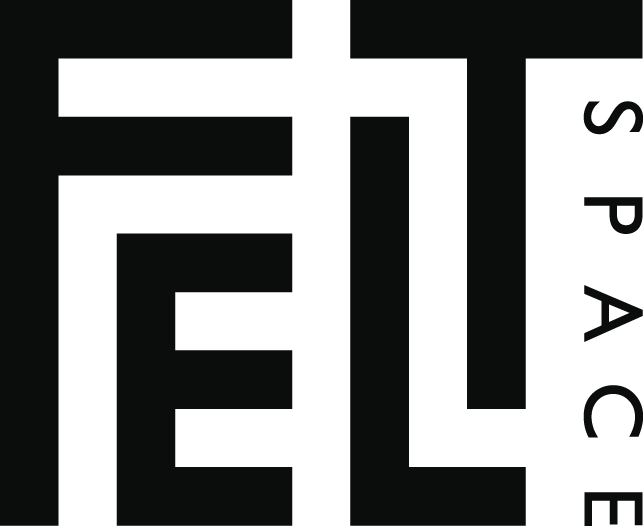Machinery twitches, recoils at its hinges. It pains the brain to waste the fallout. There are swatches of different styles, different thoughts, and they’re having a quiet conversation.
Out in the back room there are moments from a number of artists; snippets of who they are and what they make: worm food, bones, weaving and etching and writing, hands, waves, chopping, tinytiny mirrors, cabbages, and lines, holes and more lines. This is a woven together in-house guidebook from the Stockholm art fair, Hälsningar, that FELTspace attended in May this year. The resulting exhibition 5 months later feels delicate, generous, and considered, yet fleeting. It is interesting to be in a small space with mostly small (in dimension) art works from so many artists. It does feel like something that has travelled. Like memories or photos of memories from time spent overseas. Like someone has gone to the beach and collected their favourite rocks. And you can see all their subtle beauty.
In the front room there are moments of a different kind—still adjacent to a photograph—but they have a more stationary feel to them. Orson Heidrich’s process for this exhibition relied on photography, as well as metal (mainly aluminium and brass), which perhaps gives them this grounded quality. But the metals are delicately hung, suspended, where they would otherwise be found underground. The works on the left wall are all framed. They cannot stand on their own. Orson said even a breeze could crumple them all. That’s what is so cool to me about a process. That something that stood beneath tonnes of soil could be blown to bits in a breeze after being cut, pressed and prodded. Orson speaks about the importance of aiming for a ‘perfection’, while leaving room for the beauty found in mistakes. These framed works were ‘mistakes’, found while looking for the perfect thinness of aluminium. I imagine a clunkiness to the process, but what results is so delicate that it must be held within a frame. To be so beaten.
An artist’s choices are endlessly interesting to me. These choices can be something as simple as, “I chose to use this material because it is my favourite,” but if it feels important/exciting to you and the process, then it is probably vital to its creation. Personally, I don’t think something is worth making if it doesn’t excite me. Some of Orson’s decisions can be viewed as purely aesthetic or sometimes inadvisable, such as making a press from aluminium rather than wood. But is an aesthetic choice not just one that excites your senses? And excitement is infectious. I love the idea of making a decision that one is advised against, just because it feels important, even if others don’t really understand why. To me, this shows an intuitive faith in the extraordinary, in the joy of, “wow, how cool is this material?!” And that seems like something worth sharing.
I’ve heard both Orson and Ian Gibbons speak about machinery and impact. This can be read in the tactile and direct impact of a press on metal in Orson’s work, or in the broader more abstract impact of humans on climate, as in Ian Gibbon’s.
Ian’s videos feel like an excited embrace of visually captivating moments in nature, as well as a cautionary tale. They have a sci-fi feel to them, perhaps derived from his background in science, and as an educator. Educators and artists are both storytellers, and this experience as a storyteller can be seen in the subtle decisions made within Ian’s works. There are messages hidden in short phrases that echo an understanding or deeper meaning. In Critical Point, Ian played a game of Thesaurus Substitution, taking words from the Adelaide Botanical Gardens’ website. He put these words into a thesaurus, picking out the ‘best’ ones to create an in-video poem. Here we see more seemingly inconsequential or subjective choices that have their foundation in an intuitive intrigue. The mystery in the sometimes superficially disjointed words feels intentional; an invitation to exploration that a scientist, viewer and artist all ideally share. Here is left: scope for the imagination and room for pondering. Education, inspiration and momentum are all important to the discussion and slowing of climate change. It seems only necessary for an artist making work on the matter to make choices based on what has inspired, excited or moved them.
Global issues and global interactions are rife in this segmented and interconnected exhibition. Everything feels paused, though movement is evident. This gives me clues that consideration is necessary and my body’s stillness is too. I felt honoured to be in a space of Alien relics and their fantastical collection of sea rocks, and with my new understandings, I perhaps fear their invasion a little less.
